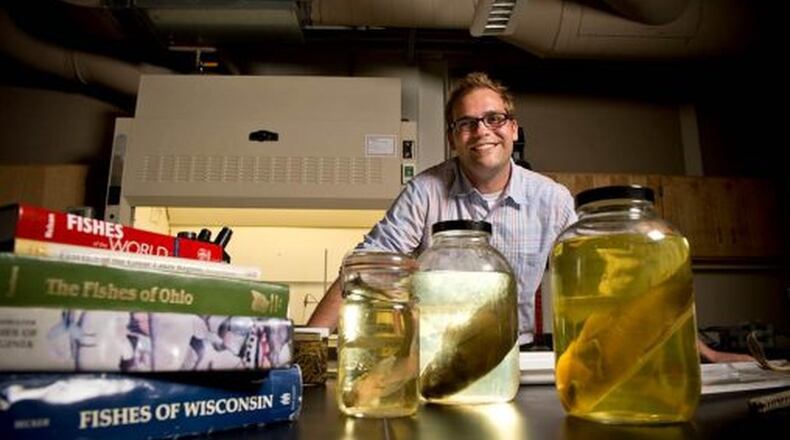Gov. Mike DeWine also recently met with several area researchers regarding algae and pollution problems that Ohioans will likely encounter over the holiday weekend.
One of them was Stephen Jacquemin, a Wright State University Lake Campus biology professor and researcher who works in the school’s agriculture and water quality center on Grand Lake St. Marys. The meeting, among other initiatives, shows “Ohio is making water quality a priority in a way that we haven’t seen before,” Jacquemin said.
» RELATED: Wright State nearly doubles cash reserves in past two years
The new fund comes a little more than a year after former Gov. John Kasich took executive action to require the Ohio Environmental Protection Agency to create rules to protect Lake Erie.
The fund will establish programs to minimize nutrient runoff into Ohio’s waterways, pay for more staffing in soil and water conservation districts, create restoration programs for wetlands areas and support research, according to the governor’s office. The fund will also bolster ongoing efforts to improve Lake Erie and other rivers and lakes.
“We believe that this is a responsible approach to address a critically important issue,” DeWine said in announcing the fund.
The fertilizers and nutrients that help farmers grow their crops, such as nitrogen and phosphorus, are causing algae to blossom in Ohio’s waters, Jacquemin said.
The Ohio Farm Bureau, which has come out against heavy regulation to resolve water quality issues, supports the H2Ohio fund and its approach. DeWine’s approach to water problems shows he is “committed to work with farmers” and demonstrates an “understanding of the complexities” around water quality, said Adam Sharp, executive vice president for the bureau has said.
Implementing plans to reduce nutrients is a challenge, but the H2Ohio fund will help alleviate issues and most importantly, Jacquemin said it sends a message.
“What that budget line item says is, ‘OK, we understand enough about this problem that we can take action,’” Jacquemin said.
» RELATED: Demand for veteran burials could put strain on national cemeteries
Separate from the new fund, the Ohio EPA is considering plans to restructure the way it monitors waterways for pollutants. The change would reduce the number of sampling sites from Ohio’s 98 watersheds to 37 project areas in different parts of the state.
The change, which looks for more pollutants than just algae, would increase the frequency of testing and would enhance monitoring rather than diluting it, Ohio EPA spokesman James Lee said.
“Ohio has one of the most robust water quality programs in the country,” Lee said. “The proposed changes will enhance the program that we already have in place.”
Algae blooms commonly form in warmer, more shallow waters such as the western area of Lake Erie, Grand Lake St. Marys and Buckeye Lake. In 2017, Kiser Lake in Champaign County was overtaken by an algae bloom.
The algae blooms have become a major problem in all 50 states and the toxins from some blooms can cause vomiting, fevers and a number of other symptoms in people who come in contact with them, according to the U.S. EPA. Earlier this month toxic algae poisoning killed three dogs in Wilmington, North Carolina, and another dog died after being poisoned by in the Guadalupe River in Texas.
As of Tuesday, Grand Lake St. Marys in Celina, Buckeye Lake in Fairfield and Maumee Bay State Park near Toledo all had advisories for harmful algal blooms, according to BeachGuard, an advisory website from the Ohio Department of Health. More than a dozen other beaches at other state waterways also had advisories for high levels of bacteria, the site shows.
It’s time those waterways and their beaches be cleaned up, Jacquemin said.
“This is a problem we have to solve. It not only affects us, but future generations,” Jacquemin said. “Making water quality a priority is the only real possible decision. We have to.”
FIVE FAST READS
• Would governor’s 17-point plan stopped Sunday’s gun violence?
• School of Aerospace Medicine at Wright-Patt gets new leader
• Gov. DeWine: ‘Changes certainly have to be made at Wright State’
• State proposal could lower college tuition for active duty military
• Wright State increases tuition, fees by maximum allowed under Ohio law
About the Author
